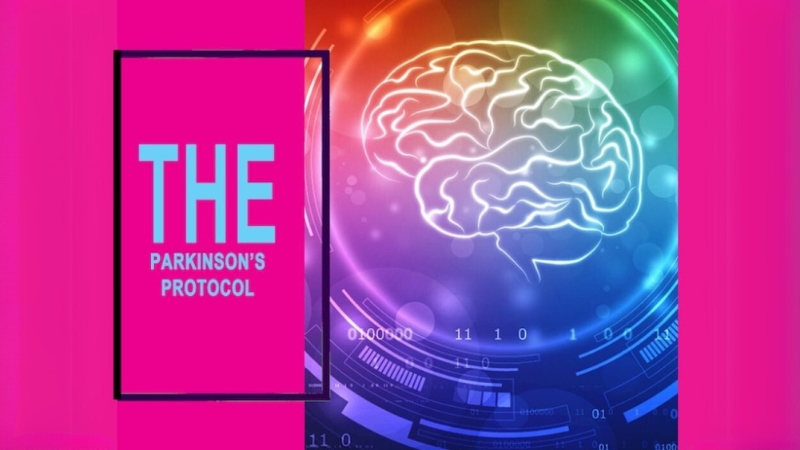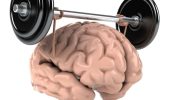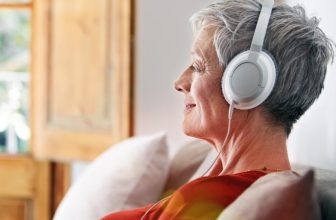How does The Parkinson’s Disease Protocol support patients?

Parkinson’s disease is a neurodegenerative disorder that affects millions of people worldwide, causing symptoms like tremors, stiffness, slowness of movement, and balance problems. While there is no known cure for Parkinson’s disease, treatments and protocols like “The Parkinson’s Disease Protocol” by Jodi Knapp have gained attention for their claims of alleviating symptoms and improving the quality of life for patients. In this article, we will explore how the Parkinson’s Disease Protocol works, its potential benefits, and whether it is a viable option for people living with this condition.
Introduction
Parkinson’s disease affects the nervous system, specifically the brain’s ability to produce dopamine, a neurotransmitter crucial for movement and coordination. This leads to the hallmark symptoms of the disease. Over time, Parkinson’s disease can cause debilitating effects on daily life, which can significantly reduce the quality of life for those affected. Traditional treatments for Parkinson’s disease include medications like levodopa, deep brain stimulation (DBS), and physical therapy. However, these treatments often focus on managing symptoms rather than addressing the root causes of the disease.

In recent years, alternative treatments have gained popularity, especially among patients seeking to reduce their dependence on medication or who are interested in complementary therapies. One such alternative is The Parkinson’s Disease Protocol, a program developed by Jodi Knapp. According to its proponents, this protocol offers a natural and holistic approach to managing Parkinson’s symptoms, and it focuses on nutrition, lifestyle changes, and natural remedies. But does it work? And if so, how does it support Parkinson’s disease patients?
1. What is The Parkinson’s Disease Protocol?
The Parkinson’s Disease Protocol is an alternative treatment program designed by Jodi Knapp, a health researcher. It claims to help patients suffering from Parkinson’s disease improve their symptoms through specific lifestyle changes, including dietary adjustments, detoxification techniques, and exercises that promote brain health. The program does not promise to cure Parkinson’s disease but suggests that these strategies can improve the overall quality of life and reduce the severity of symptoms.

Knapp developed the program after extensive research on the underlying causes of Parkinson’s disease and the role of natural remedies in managing these causes. According to the protocol, Parkinson’s disease is not only a result of neurodegeneration but also due to inflammation and toxins that accumulate in the brain. By addressing these factors through natural treatments, the protocol aims to improve both physical and mental health for Parkinson’s patients.
2. Key Components of The Parkinson’s Disease Protocol
2.1 Diet and Nutrition
A core component of the Parkinson’s Disease Protocol is its dietary recommendations. The program advocates for an anti-inflammatory diet that includes nutrient-rich foods to support brain health and improve neurotransmitter function. According to the protocol, certain foods can help reduce oxidative stress, which is a major contributor to Parkinson’s symptoms.

Some of the foods encouraged in the protocol include:
- Leafy greens and vegetables: Rich in antioxidants, vitamins, and minerals, these foods are believed to reduce inflammation and improve overall health.
- Omega-3 fatty acids: Found in fish, flaxseeds, and walnuts, omega-3s are known for their neuroprotective properties.
- Berries and fruits: High in antioxidants, these can help protect brain cells from damage and support cognitive function.
- Turmeric and ginger: Known for their anti-inflammatory properties, these spices are used in the protocol to reduce brain inflammation.
The program also recommends avoiding processed foods, sugar, and unhealthy fats, which can exacerbate symptoms of Parkinson’s disease and contribute to inflammation.
2.2 Detoxification and Cleansing
Another crucial aspect of the Parkinson’s Disease Protocol is detoxification. The protocol suggests that environmental toxins and heavy metals can accumulate in the body over time, particularly in the brain, and contribute to the progression of Parkinson’s disease. To counteract this, the program includes various detoxification methods, such as:
- Juicing: Drinking fresh juices made from vegetables and fruits to help cleanse the body of toxins.
- Herbal detox teas: Certain herbs are believed to aid in the body’s detoxification processes and improve liver function.
- Saunas and sweat therapies: These are recommended as ways to help the body release accumulated toxins through sweating.
2.3 Physical Exercises and Brain Health
The program emphasizes the importance of physical exercise, particularly exercises that are designed to improve brain function and promote neuroplasticity. Neuroplasticity refers to the brain’s ability to adapt and form new neural connections. Parkinson’s patients often experience a decline in neuroplasticity, which can make rehabilitation difficult. The Parkinson’s Disease Protocol encourages activities that promote movement, such as:

- Walking and stretching exercises: These help improve flexibility, reduce rigidity, and enhance motor coordination.
- Brain games and cognitive exercises: Activities that challenge the brain are encouraged to maintain mental sharpness and help slow cognitive decline.
- Balance and coordination exercises: These can reduce the risk of falls, which are a significant concern for Parkinson’s patients.
2.4 Supplements and Natural Remedies
The Parkinson’s Disease Protocol also recommends various natural supplements and remedies that may help alleviate Parkinson’s symptoms. These include:
- Coenzyme Q10 (CoQ10): This antioxidant is believed to improve mitochondrial function and may help protect brain cells.
- Vitamin D3: Some studies suggest that vitamin D deficiency is linked to Parkinson’s disease, and supplementing with D3 may help improve motor function.
- Magnesium: Magnesium is recommended for its ability to relax muscles and improve sleep quality, which is often disrupted in Parkinson’s patients.
3. How The Parkinson’s Disease Protocol Supports Patients
The primary goal of The Parkinson’s Disease Protocol is to provide a natural, non-invasive treatment option for individuals with Parkinson’s disease. Rather than relying on pharmaceuticals, the program focuses on supporting the body’s healing mechanisms through diet, lifestyle changes, and natural therapies. Here are some of the ways it may support Parkinson’s patients:
3.1 Reducing Inflammation
One of the central themes of the protocol is reducing inflammation in the brain. Chronic inflammation is thought to play a significant role in the progression of Parkinson’s disease. By following the program’s dietary guidelines and incorporating anti-inflammatory foods, patients may experience reduced inflammation, which can help alleviate symptoms such as rigidity, tremors, and stiffness.
3.2 Supporting Neuroprotection
The Parkinson’s Disease Protocol emphasizes neuroprotective practices, including the intake of antioxidant-rich foods and supplements. By protecting the brain cells from oxidative stress and supporting mitochondrial function, the protocol may help slow down the neurodegenerative process, potentially improving motor function and cognitive abilities.
3.3 Enhancing Mental Clarity
Many Parkinson’s patients experience cognitive decline, which can severely affect their quality of life. The program’s focus on brain exercises, physical movement, and supplements like CoQ10 and vitamin D3 may help enhance mental clarity and slow cognitive decline. Additionally, regular physical activity has been shown to improve mood and reduce symptoms of depression, which are common among Parkinson’s patients.

3.4 Improving Mobility and Reducing Muscle Stiffness
By incorporating exercises designed to improve flexibility, strength, and coordination, the Parkinson’s Disease Protocol may help patients maintain or improve their mobility. This is crucial for maintaining independence and preventing complications like falls.
3.5 Detoxifying the Body
The protocol also addresses the issue of toxins and heavy metals, which are believed to contribute to the development and progression of Parkinson’s disease. By recommending detoxification practices such as juicing, herbal teas, and sauna use, the program aims to support the body in eliminating harmful substances and improving overall health.

4. Effectiveness of The Parkinson’s Disease Protocol
While many patients report positive experiences with The Parkinson’s Disease Protocol, it is important to note that the protocol is not a cure for Parkinson’s disease. Its effectiveness will vary from person to person, depending on factors such as the severity of the disease, the individual’s commitment to the program, and their overall health.
There is some evidence to support the idea that lifestyle changes, diet, and exercise can benefit individuals with Parkinson’s disease. However, more research is needed to determine the long-term effectiveness of these approaches, particularly when used in conjunction with traditional medical treatments.
5. Conclusion
The Parkinson’s Disease Protocol offers an alternative, holistic approach to managing Parkinson’s symptoms. By focusing on natural remedies, nutrition, detoxification, and exercise, the protocol aims to improve the quality of life for patients with Parkinson’s disease. While it may not cure the condition, many patients find it beneficial as a complementary therapy to traditional treatments. However, it is important for individuals to consult with their healthcare provider before starting any new treatment program, especially if they are already on medication or other therapies.
















